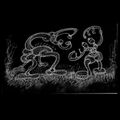Template:Selected anniversaries/January 5: Difference between revisions
No edit summary |
No edit summary |
||
| Line 19: | Line 19: | ||
||1871: Federigo Enriques born ... mathematician, now known principally as the first to give a classification of algebraic surfaces in birational geometry, and other contributions in algebraic geometry. Pic. | ||1871: Federigo Enriques born ... mathematician, now known principally as the first to give a classification of algebraic surfaces in birational geometry, and other contributions in algebraic geometry. Pic. | ||
||1874: Joseph Erlanger born ... physiologist, neuroscientist, and academic Nobel Prize laureate. Pic. | |||
||1884: Mathematician Arnaud Denjoy born. His contributions will include work in harmonic analysis and differential equations; he will be the first to define an integral which integrates all derivatives (now known as the Henstock–Kurzweil integral). Pic: https://ro.wikipedia.org/wiki/Arnaud_Denjoy | ||1884: Mathematician Arnaud Denjoy born. His contributions will include work in harmonic analysis and differential equations; he will be the first to define an integral which integrates all derivatives (now known as the Henstock–Kurzweil integral). Pic: https://ro.wikipedia.org/wiki/Arnaud_Denjoy | ||
| Line 34: | Line 36: | ||
||1906: Kathleen Kenyon born ... archaeologist whose work at Jericho identified it as the oldest known continuously occupied human settlement by excavating to its Stone Age foundation. This evidence pushed back the era of occupation of the mound at Jericho from the Bronze Age and Neolithic to the Natufian culture at the end of the Ice Age (10,000 – 9,000 BC). She established that the city itself spanned more than 3,800 years. Over 100 tombs were discovered at Jericho during excavations (1952-58). Kenyon helped pioneer stratigraphic excavations as a more scientific approach to archaeological digs, a technique she learned while working with Sir Mortimer Wheeler at his major excavation of the Romano-British city of Verulamium (north of London). Pic. | ||1906: Kathleen Kenyon born ... archaeologist whose work at Jericho identified it as the oldest known continuously occupied human settlement by excavating to its Stone Age foundation. This evidence pushed back the era of occupation of the mound at Jericho from the Bronze Age and Neolithic to the Natufian culture at the end of the Ice Age (10,000 – 9,000 BC). She established that the city itself spanned more than 3,800 years. Over 100 tombs were discovered at Jericho during excavations (1952-58). Kenyon helped pioneer stratigraphic excavations as a more scientific approach to archaeological digs, a technique she learned while working with Sir Mortimer Wheeler at his major excavation of the Romano-British city of Verulamium (north of London). Pic. | ||
||1909: Mathematician and computer scientist Stephen Cole Kleene born. Kleene will contribute to the foundation of recursion theory, notably the study of computable functions. He will also invent regular expressions. | ||1909: Mathematician and computer scientist Stephen Cole Kleene born. Kleene will contribute to the foundation of recursion theory, notably the study of computable functions. He will also invent regular expressions. Pic. | ||
||1911: Arnold Nordsieck born ... theoretical physicist. He is best known for his work with Felix Bloch on the infrared problem in quantum electrodynamics. He developed the inertial electrostatic gyroscope (ESG) used as part of the inertial navigation system of nuclear submarines that allows them to remain underwater without having to surface to ascertain their location. Pic: https://www.ion.org/museum/item_view.cfm?cid=2&scid=4&iid=30 | ||1911: Arnold Nordsieck born ... theoretical physicist. He is best known for his work with Felix Bloch on the infrared problem in quantum electrodynamics. He developed the inertial electrostatic gyroscope (ESG) used as part of the inertial navigation system of nuclear submarines that allows them to remain underwater without having to surface to ascertain their location. Pic: https://www.ion.org/museum/item_view.cfm?cid=2&scid=4&iid=30 | ||
Revision as of 16:57, 5 December 2019
1625: Astronomer Simon Marius dies. He discovered the four largest moons of Jupiter, independently of Galileo Galilei.
1723: Astronomer and mathematician Nicole-Reine Lepaute born. She will predict the return of Halley's Comet, calculate the timing of a solar eclipse, and construct a group of catalogs for the stars.
1895: French army officer Alfred Dreyfus is stripped of his rank and sentenced to life imprisonment on Devil's Island.
1932: Novelist, literary critic, and philosopher Umberto Eco born. He will cite James Joyce and Jorge Luis Borges as the two modern authors who will have influenced his work the most.
1945: Mathematician Dmitry Mirimanoff dies. In 1917, he introduced (though not as explicitly as John von Neumann later) the cumulative hierarchy of sets and the notion of von Neumann ordinals; although he introduced a notion of regular (and well-founded set) he did not consider regularity as an axiom, but also explored what is now called non-well-founded set theory, and had an emergent idea of what is now called bisimulation.
1970: Physicist and mathematician Max Born dies. He won the 1954 Nobel Prize in Physics for his "fundamental research in quantum mechanics, especially in the statistical interpretation of the wave function".
2017: Signed first edition of Two Bugs Fighting sells for an undisclosed amount to "a prominent Gnomon algorithm theorist living in New Minneapolis, Canada.







